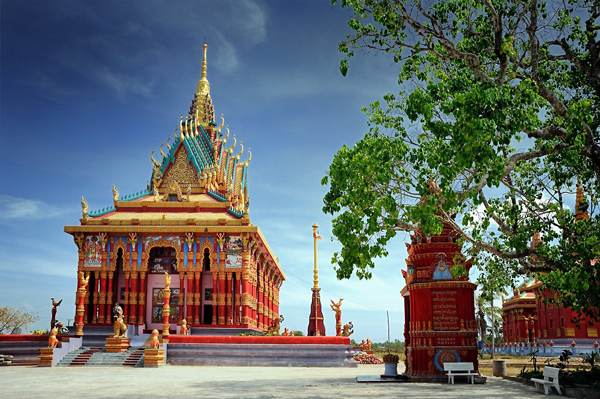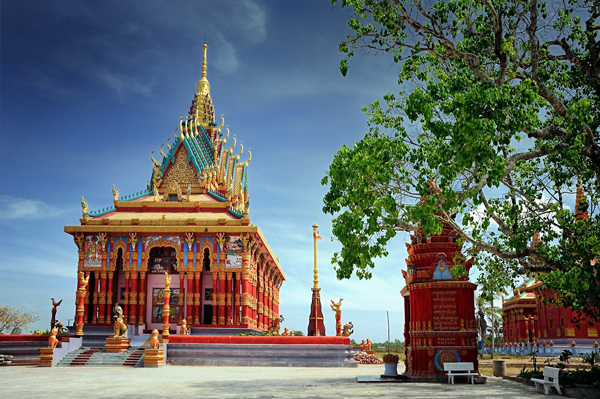
When talking about the Mekong Delta, one cannot help but think of the silhouettes of sampans with coconut trees reflecting in their shadows. The further south one goes, the more one cannot miss the Khmer pagoda roofs, silent over time, mossy or colorful. The three-layered roofs soaring high in the blue sky have become a cultural and religious symbol of this land where “storks fly straight, fish swim in the rivers”.


Built on the old main hall (from 1860) with durable materials, Ghositaram Pagoda still retains the characteristics of Southern Buddhist architecture. The main hall is always oriented east - west with a strong isosceles triangle roof.
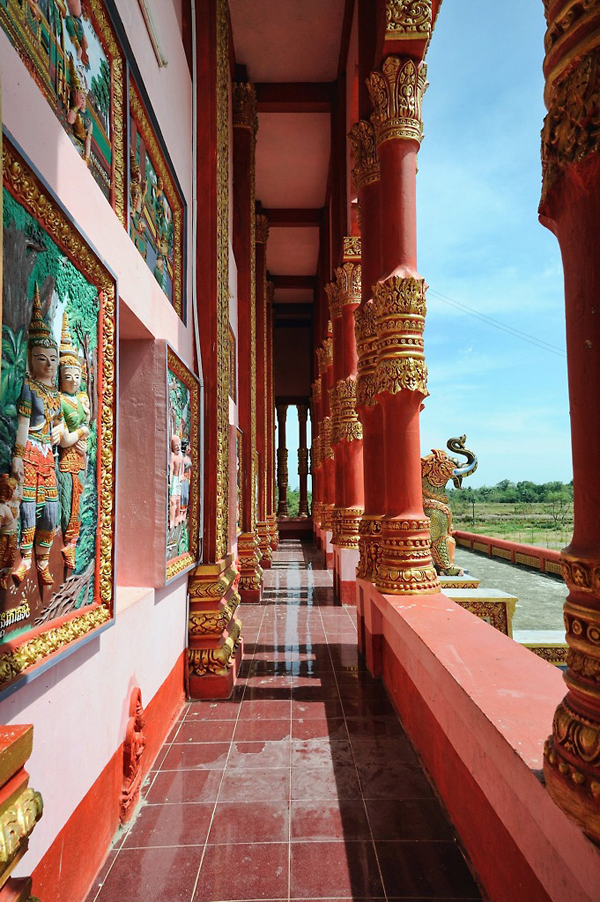
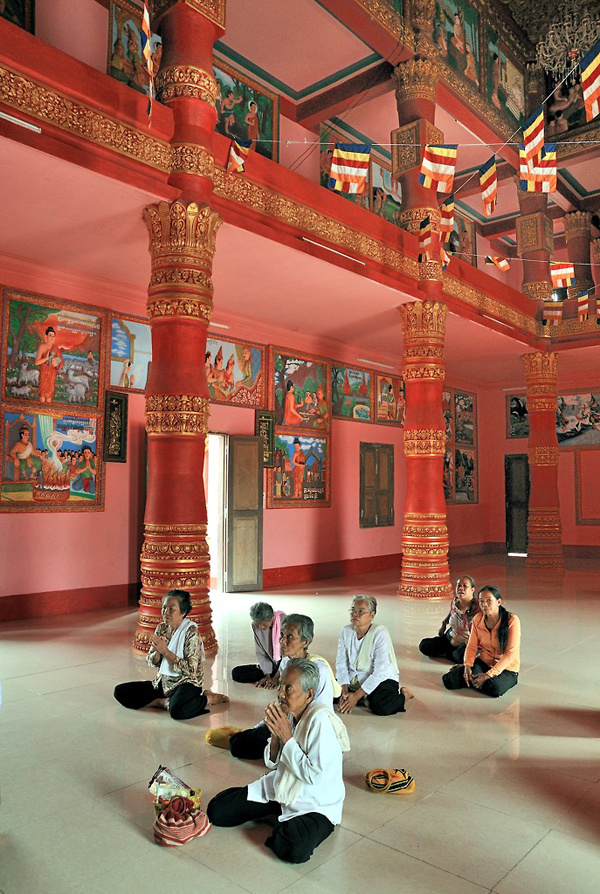
The roof of the main hall consists of three levels. Each level is divided into three folds. Each corner of the roof is stylized into the shape of a long, curved, soft snake tail. The triangle between the two gables is delicately carved. The roof folds have the image of a dragon's body, the head is located at the corners of the roof, the body is long with a lively, curved back.
It is known that artisan Danh Sa Rinh spent about 4 years to complete the decorative motifs. Interspersed between the rows of exquisitely carved pillars are relief paintings depicting the stories of Buddha from birth to enlightenment, vividly depicted with brilliant colors, captivating viewers.
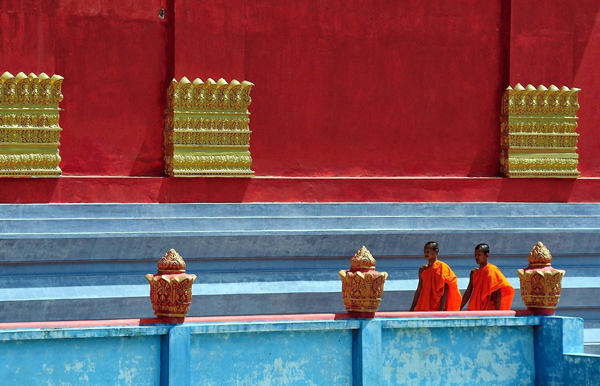
With an area of 427.5m2 and a height of 36.3m, Ghositaram Pagoda is not only the Khmer pagoda with the largest main hall in Vietnam but also a place for studying and training thousands of monks for neighboring provinces. The pagoda is a highlight in the religious culture of the Mekong Delta region.





